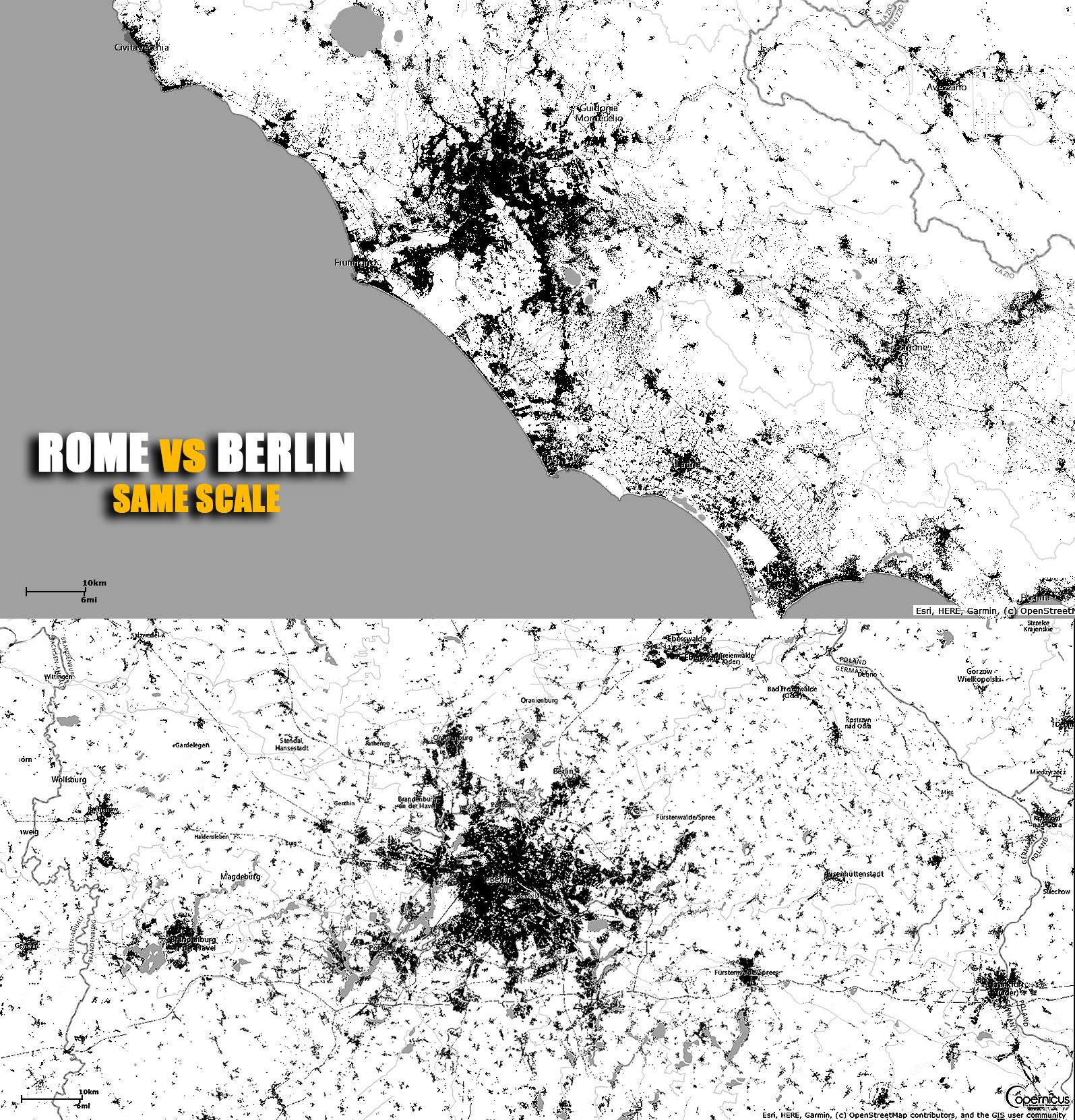Rome vs Berlin City Size Comparison Map


Marcus Rodriguez
Historical Geography Expert
Marcus Rodriguez specializes in historical cartography and geographic data analysis. With a background in both history and geography, he brings unique...
Geographic Analysis
What This Map Shows
This visualization provides a direct size comparison between two iconic European cities: Rome and Berlin, displayed on the same scale. By placing these two metropolitan areas side by side, it becomes clear how their geographic footprints differ, despite their prominence as major cultural and political centers. This comparison highlights not only the total area each city occupies but also offers insights into their urban layouts, surrounding regions, and population distributions.
Deep Dive into Urban Density and Population
When we consider urban areas, size alone doesn't tell the whole story. The population density is a critical factor that shapes the character of a city. Rome, with its rich history and dense urban fabric, has a metropolitan area that spans approximately 1,285 square kilometers, housing around 4.3 million residents. This means that the population density is roughly 3,300 people per square kilometer. Interestingly, this density contributes to a vibrant street life, a plethora of historical sites, and a unique blend of old and new architecture.
On the other hand, Berlin, the capital of Germany, covers a larger metropolitan area of about 891 square kilometers but boasts a population of approximately 3.7 million people. This results in a lower population density of around 4,300 people per square kilometer. It's fascinating to see how this larger area allows for more green spaces, parks, and a more sprawling urban landscape. The difference in layout between the two cities reflects their histories: Rome’s ancient roots dictate a more compact urban environment, while Berlin’s modern development encourages a more spread-out city structure.
Moreover, both cities have unique challenges and opportunities driven by their size and population. For instance, Rome often faces challenges related to traffic congestion and preservation of its historical sites, while Berlin is known for its rapid urban development and the integration of new communities. The diversity in their approaches to public transportation, housing, and urban planning can be traced back to their geographic scales and population distributions.
Regional Analysis
Examining the specific regions within each city provides further insight into their urban dynamics. In Rome, areas like Trastevere and the historic center are characterized by narrow streets filled with cafes and shops, reflecting a dense urban environment. These areas attract tourists and locals alike, creating a hub of activity but also leading to challenges like overcrowding.
Conversely, Berlin's neighborhoods vary widely in character. Areas like Mitte are bustling with cultural institutions and nightlife, whereas districts like Charlottenburg offer a quieter, more residential vibe. The city’s planning allows for diverse living arrangements, from high-rise apartments to single-family homes, which is a stark contrast to Rome’s historic preservation efforts that limit new constructions. This juxtaposition of urban styles becomes even more apparent when considering their respective growth trajectories over the past century.
Significance and Impact
Understanding the differences in size and density between Rome and Berlin is crucial for grasping the challenges and opportunities each city faces. Urban planners and policymakers must consider these factors when addressing issues such as housing shortages, transportation infrastructure, and environmental sustainability.
For example, as cities continue to grow, how will Rome balance the need for modernization while preserving its historical integrity? Similarly, Berlin is grappling with the implications of gentrification and the pressure to maintain affordable housing amidst a booming tech industry.
Looking ahead, urbanization trends suggest that cities will continue to play an essential role in global economies and cultures. As populations increase, the need for efficient urban planning becomes more pressing. In this context, the size comparison between cities like Rome and Berlin serves not just as a geographical curiosity but as a vital piece of the puzzle in understanding urban development in our modern world.
Visualization Details
- Published
- September 15, 2025
- Views
- 82
Comments
Loading comments...